Image above: At Mary Boone Gallery during the opening night. ©Paula Rey Jiménez.
STEVE MILLER: I walk into your studio downtown, and I notice there is not a darkroom. That’s a big difference from the years that I have known you. But let’s start with the story you're about to tell at Mary Boone Gallery, which is known as a painting gallery with some conceptual photography, with someone like Barbara Kruger. What’s the back-story behind her showing a classical photographer like you?
RALPH GIBSON: Excellent question. I have known Mary since her Bykert days, when she was in her late teens or early 20s. We always talked about doing something and about ten years ago, I showed her a body of works and she said, “I like this, but it isn’t really right for what I am doing these days. Let’s keep the doors open.” When Political Abstraction came along I realized I had done a lot of large abstract work and it was all digital. I really wanted to show it, because I hadn’t had a gallery show in 12-15 years. I’ve been showing all over the place: museums, galleries around the world because that’s how I make my living, but I hadn’t really been doing much visible exhibiting in New York. So, I invited her over. She immediately liked the work and understood it. Now this is a key issue for an artist, as you know. When someone walks into your studio and you show them your most abstract, most extended effort and it is perceived with total clarity, that augurs well. I was so pleased when she said, “Let’s do a show in September. Open the season uptown.” Now, these were 32 by 44 inches and the scale out perfectly to her gallery on 5th avenue. We installed yesterday, and I’ve had a couple hundred one-man shows and I picked up quite a few moves about how you integrate the scale of the shapes in the photographs to architecture of the gallery. Again, her sense of abstraction was dead on. She knew what went where best.
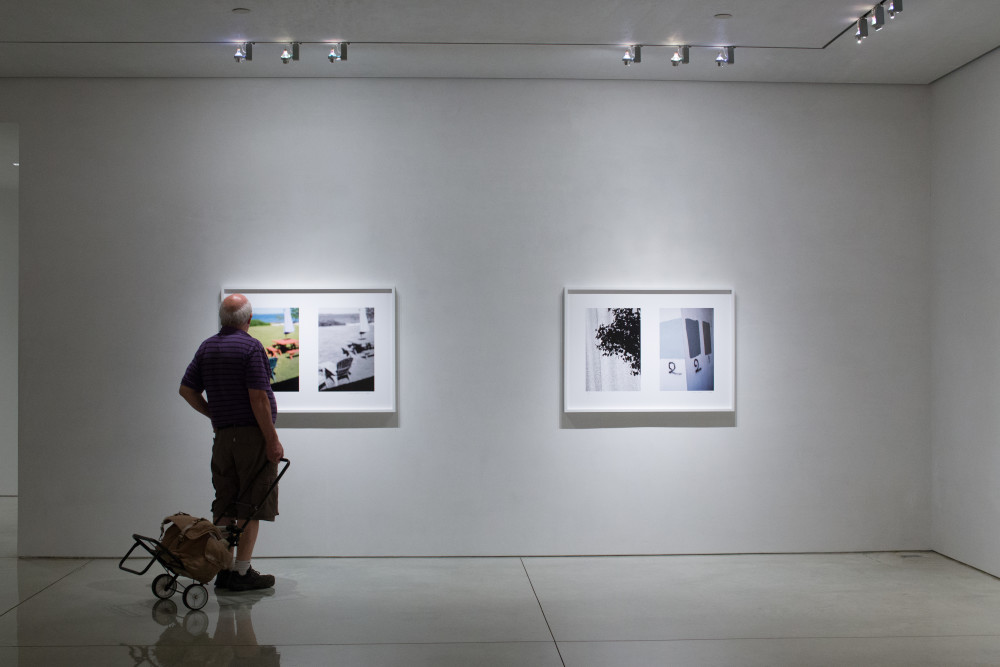 During the opening at Mary Boone Gallery. ©Paula Rey Jiménez.
During the opening at Mary Boone Gallery. ©Paula Rey Jiménez.
SM: It’s funny you say her sense of abstraction, I always think that the trend with Mary and the gallery is narrative and representational. It’s interesting that you focus on the formal aspects of her ability to key in on the abstraction.
RG: I consider myself a formalist. Most photography is about allegory and narrative, Samuel Goldwin said “If you got a message send a telegram” I am purely a formalist, I have no message. I love the way I can fit anything into a vertical frame with a 50-millimeter lens on a Leica digital.
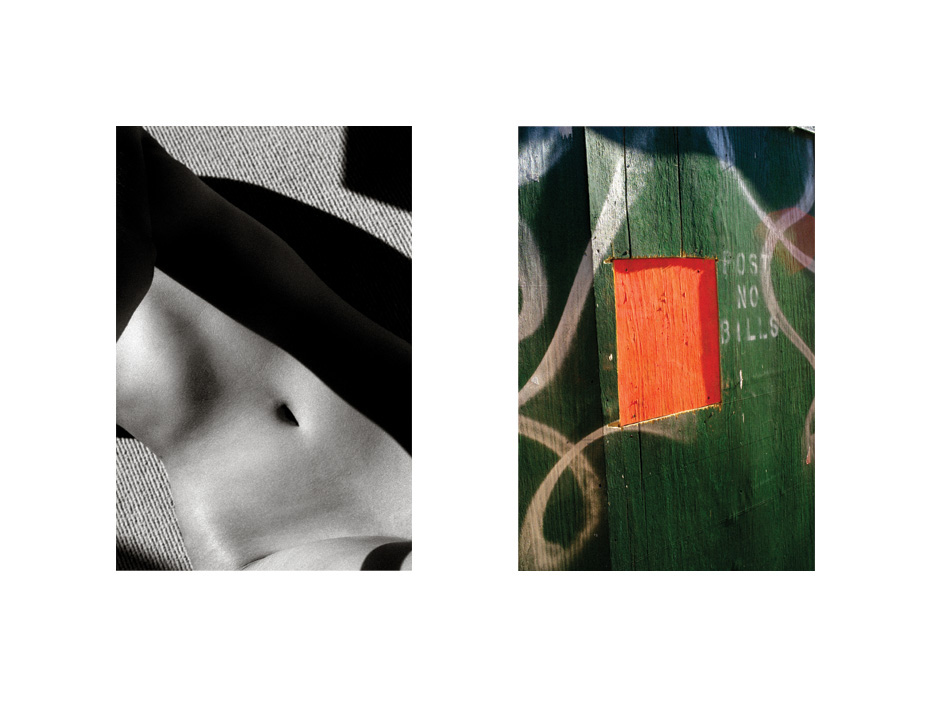 ©Ralph Gibson, "Untitled", 2015. Archival Pigment Print. Courtesy of Mary Boone Gallery, New York.
©Ralph Gibson, "Untitled", 2015. Archival Pigment Print. Courtesy of Mary Boone Gallery, New York.
SM: You can never trust an artist no matter what they say, because there is a very strong narrative to the book you did about Brazil, for example, which I probably know by heart.
RG: You got me there, and I’ll tell you why: Brazil has such a powerful cultural footprint that I was only able to abstract the few images, like the blue window. Earlier I had been a documentary photojournalist, briefly at Magnum, as a young man. I have those moves. It’s a language I learned to speak. It was my first language because from 17-27 all I wanted to be was a truth telling photojournalist and documentary photographer. I learned those moves with the Leica. I was essentially a street photographer. These moves, I might add, have served me very well through the years. However, back to your question: Brazil is what it is, whether you acknowledge it. I was so thrilled by the scope and the dimension of the culture, I was reading Claude Levi-Strauss’ Tristes Tropiques at the same time and his explorations of tribes around Brazil. And the answer is yes, that is much more documentary than anything have done before or since.
SM: I would also argue there is a big narrative when you take a feather and tickle someone’s naked ass.
RG: Well, I would argue that, that was in 1974 [Laughter]. This is an interesting point. My sense of scale and abstraction has slowly, glacially evolved through the decades, to where I reduce, reduce, reduce. Now if you’re making a drawing your going to add lines until the drawing is finished. It’s additive. A sculptor with a piece of marble is going to chip away, subtract, until he has got his head. Now for me photography is purely subtractive and it has remained such to the point now where, in Political Abstraction, I was essentially attempting to make photographs of nothing. I am not waiting for the hammer to fall on the pistol and the guy’s brains get blown out. There is no event in my work. The event is my perceptual act, and/or the reader’s. In the last line of Political Abstraction I stated that the reader is the subject of the book.
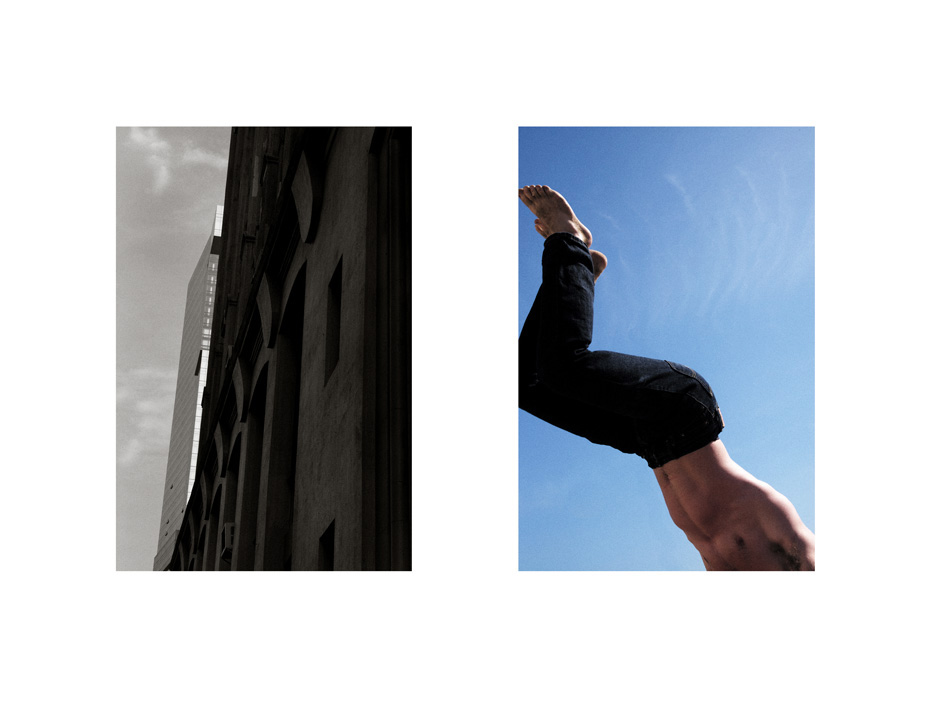 ©Ralph Gibson, "Untitled", 2015. Archival Pigment Print. Courtesy of Mary Boone Gallery, New York.
©Ralph Gibson, "Untitled", 2015. Archival Pigment Print. Courtesy of Mary Boone Gallery, New York.
SM: I’ll give you glacial evolution towards abstraction. What I noticed about the Brazil book, because I know it so well, is the combination of color versus black and white, and that each of the pages looks beautifully, thoughtfully composed. I mean, the idea of the profile with the water lining, I think that’s really great. You clearly thought this out. Do you want to talk about this, the composition, black and white versus color, and why you did those choices?
RG: Absolutely, that’s the whole point. For the past ten years I have been deep in critical theory and phenomenology, semiotics, linguistics, and they are powerfully informing my subsequent efforts. When I look at a shape, when I look at volume, when I look at an object, when I bring my camera to my eye, what’s going on is I am essentially processing it through a series of filters, starting with the fact that I am primarily an American artist. I am interested in the language of shapes, the language of color. People say, “Do you prefer to work in black and white or color.” I respond, “I like working in all three.” Because I am very interested in how black and white reduces abstract reality in three steps. A photograph of something in so-called reality is 100 percent scale, color, and in three dimensions. Make a black and white photograph, you’re reducing it in scale, you’re reducing it to 2 dimensions, and you’re reducing it to black and white. Three steps away, subtracted from so called reality. Color is only two steps away. Now in those three steps of black and white you get a tremendous amount of drama. Which is why photography is so loved for its black and white work. On the other hand, I think color is incredibly sophisticated language. As a painter, you’d spend the rest of your life examining what is color, how does it function, and what does it mean? I will give you a brief aside. I was working in France in color, in the late 80s early 90s, and Photoshop was starting to make its presence felt. I stated I am not going to go for these bright Caribbean colors, I am going to continue with my pastel French impressionist hues and ambers. Now I’ll fast-forward 25-30 years and Photoshop has changed the semiology of color in the entire planet. That desktop, that hand held device, the television, the billboard, the magazine, the cinema, everything is saturated. Photoshop has won. It is the new language of color. It started in Western civilization, now it has saturated (no pun intended) the planet.
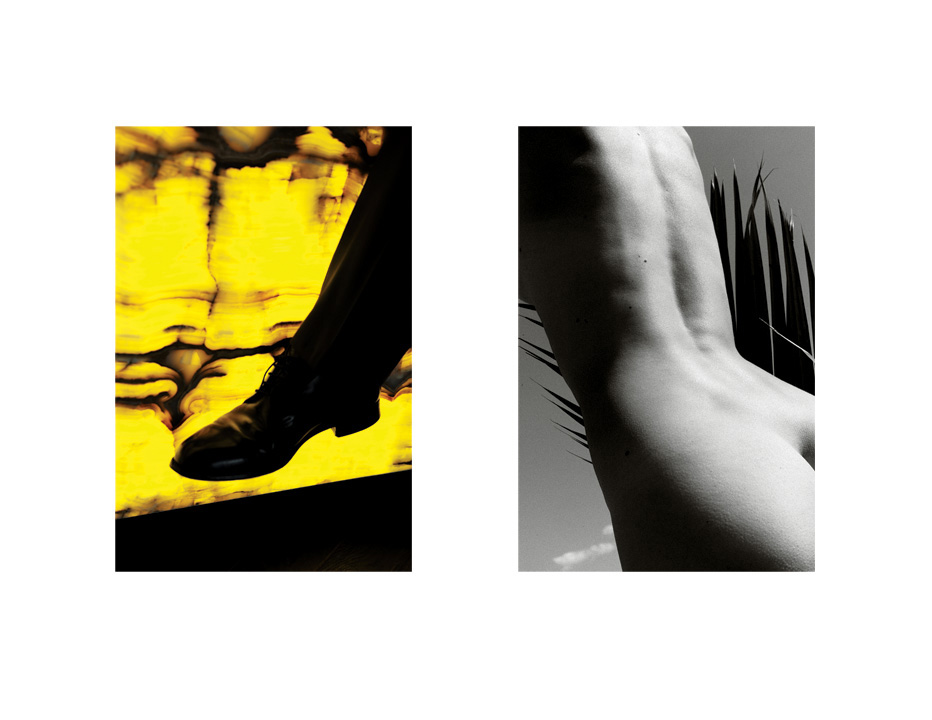 ©Ralph Gibson, "Untitled", 2015. Archival Pigment Print. Courtesy of Mary Boone Gallery, New York.
©Ralph Gibson, "Untitled", 2015. Archival Pigment Print. Courtesy of Mary Boone Gallery, New York.
SM: I couldn’t agree with you more.
RG: So, this is a phenomenon I have marveled to observe. How do you change a language of color in a planet of 8 billion people? This is something I have observed in the course of our lifetime, over the last 20 years or so. Now these are all things I take into consideration when putting a color photograph next to a black and white photograph. I have always had this theory of visual overtones, that the space between the picture created content as well. If you hit a C chord on the guitar – C, E, G- those three notes will release additionally tonalities that you can not strike directly. They are called overtones. So why could I not apply this to my 2 page spreads? My diptychs. A big part of what you are seeing in these two pages is what’s in between them. The triggering reference in your mind of the individual images produces a third response.
SM: OK, I like that. Thelonious Monk always said, you know, it’s about the space between the notes.
RG: Beautiful. That’s one I hadn’t heard and I certainly subscribe immediately. Subito!
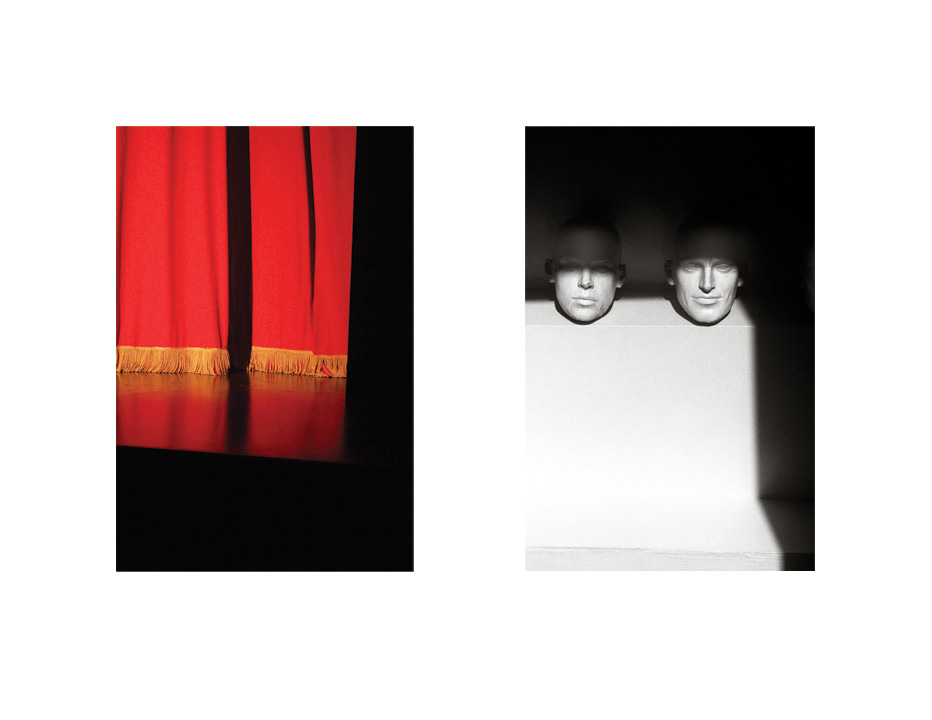 ©Ralph Gibson, "Untitled", 2015. Archival Pigment Print. Courtesy of Mary Boone Gallery, New York.
©Ralph Gibson, "Untitled", 2015. Archival Pigment Print. Courtesy of Mary Boone Gallery, New York.
SM: I have known you for a while. It’s like I can’t remember coming into your last studio downtown, without somebody being in the dark room, printing away.
RG: Well, let’s discuss the darkroom. In this box over here, neatly labeled, you’ll see about 10,000 silver gelation prints. I have close to 6,000 silver gelation prints in a couple 100 museums around the world, public collections. I feel that I understand silver gelation prints. Now, I spent 55 years in the dark room and it is my sincere desire to spend the next 55 years working in a digital space. I was slowing down, in all seriousness. I was not shooting as much, feeling somehow that my best work was behind me, which is something I talked to many artists my age about and I really rebelled against that feeling. So, when Leica approached me to endorse their digital monochrome, I said, “I can’t do that.” Along comes the prototype one morning. I am with my shrink, laying on her couch, saying, ‘How can I do this? How can I change my identity? I am a black and white photographer blah blah blah.”
Then I leave her office and the first picture I take is the cover Mono, the book. And I said, “That picture looks like it could have been taken by me.” The point being that I immediately achieved my visual signature through the digital space. It obeyed my visual intention. Now, that all of the sudden rang a lot of bells in my head because it meant that I could work a lot faster. If you told me I could curl 500 pounds with my right arm, I would say, “Yes, I am using digital.” That plus running it through my computer. I did this book in a year. I could have never processed the imagery fast enough to achieve that book in that time I did.
SM: Just for the record, the book is Political Abstraction. This is the catalogue for Mary’s show? So, you did this book in a year?
RG: Yes. Now let’s consider: I am looking out my window. It’s a beautiful sunny day. I can see the rooftops of New York heading East. I could describe them to you in English or I could describe them in French. There are many languages in which we can describe the same subject. We are talking about the rooftops of New York. It doesn’t really matter how you say it; it matters what you say. Now, admittedly the substrate of silver gelatin harbors a certain warmth and glow, but at this point I am so cerebral. I am just an egghead, and I am interested in the intellectual content of the meaning of the perceptual act. I am not really looking for the tonalities of silver gelation. Which would really be the only reason to use it, if you wanted that gamma, that grey scale.
SM: OK, Ralph, I’ve known you for a long time. You're one of the best raconteurs that I know. If I can believe what you tell me you started taking photographs in the Navy at age 17. You have got a well-recorded career of 40 books. You have to think that in some way this show is, perhaps, some kind of summation, or does it make you reflect in a certain way on your life’s work?
RG: Well, you know, Steve, the fact is, now that I am in what we’ll call a “prolific stage” as an artist you know how good it feels when its going really well. I wrote in my journal “I am good enough photographer to know how good I really could be.”
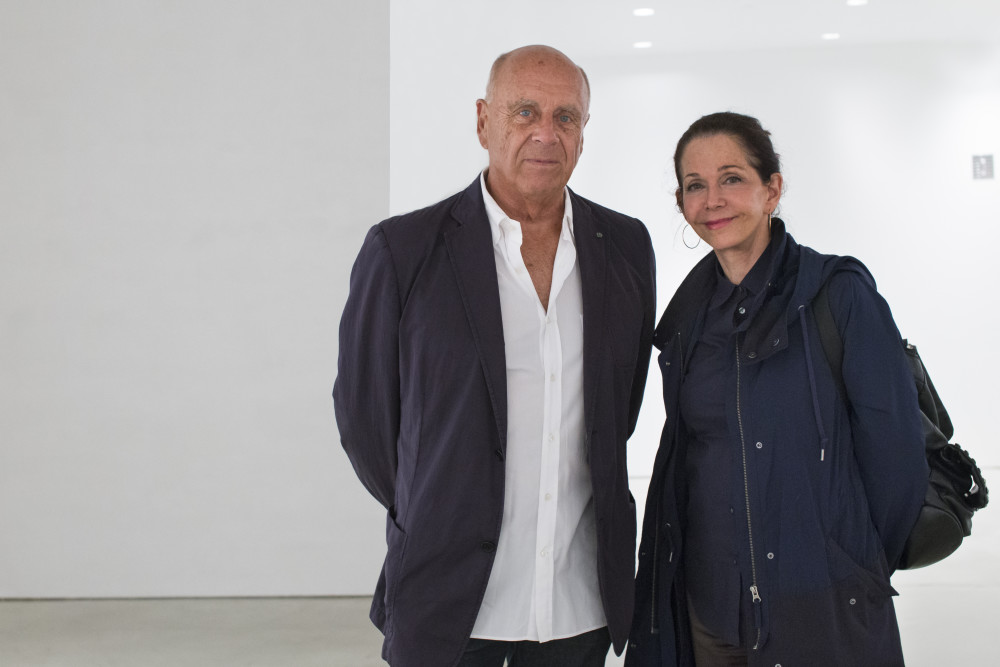 Ralph Gibson and Andrea Blanch during the opening at Mary Boone Gallery. ©Paula Rey Jiménez.
Ralph Gibson and Andrea Blanch during the opening at Mary Boone Gallery. ©Paula Rey Jiménez.
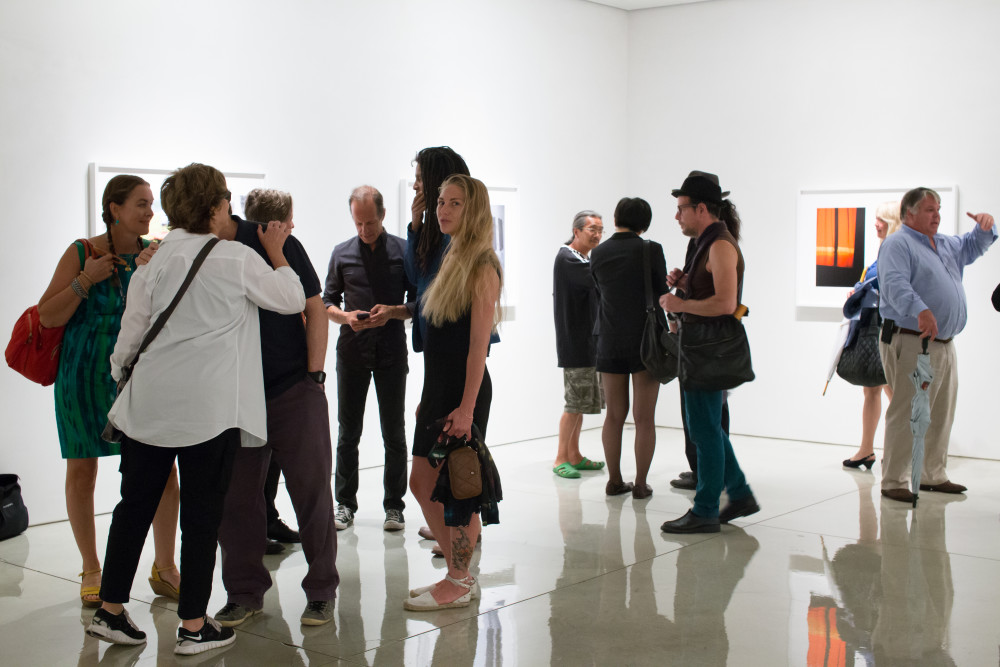 During the opening at Mary Boone Gallery. ©Paula Rey Jiménez.
During the opening at Mary Boone Gallery. ©Paula Rey Jiménez.
SM: OK, Ralph, you just picked up a camera. Is this the camera you’ve been talking about?
RG: Yeah. This is my favorite select among them. This is the Leica monochrome. I love it. It gets me places where I wouldn’t have gone otherwise. That’s an enormous contingency as photographer. For many years, I have thought what I really wanted to do was take everything I knew about photography and put into a project. This thought led me to the idea that I don’t really want to make photographs. I want to make A Photography
Hopefully, this recent body of work shows some indication of progress in that direction. You know the years of struggle are over, Steve. Now begin the years of struggle.
SM: I think that’s a wrap.
by Steve Miller

